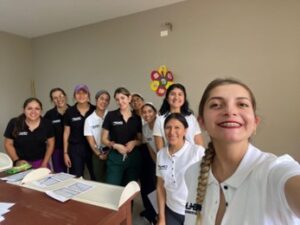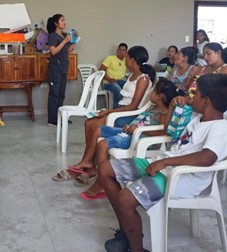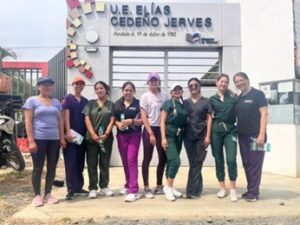Hello! I am excited to share with you the details of my summer practicum with Ipas. I started as Program Evidence Intern on May 15, so this is my first blog of the summer. I hope you enjoy reading about my experiences as I blog over the course of my practicum!
Selection Process: I was fortunate enough to be offered this internship with an organization I have long admired. To form connections at Ipas, I reached out to my now preceptor, Sally, during the Fall 2022 semester for an informational interview. During that conversation, Sally recommended I enroll in qualitative analysis coursework and informed me she would soon be looking for a summer intern. I highly recommend networking to my peers and incoming MPH candidates because it is the reason I landed this position, among others. As promised, Sally shared the internship application as soon as it was finalized. Soon after, I interviewed and was offered the position. Networking not only allowed me to make this connection that led me to acquiring my practicum, but also guided me to take a class on qualitative methods, which was highly marketable during my interview.
Company & Role: Ipas is a global organization that works across Africa, Asia, and Latin America to improve access to make safe abortion and contraception widely available, to connect people with vital information so they can access safe services, and to advocate for safe, legal abortion. By building resilient abortion and contraceptive ecosystems using a comprehensive approach across sectors, institutions, and communities, Ipas believes in a world where all people have the right and ability to determine their own sexuality and reproductive health. At Ipas, I work within the Technical Excellence department on the Program Evidence team, which is responsible for strategic guidance and decision-making to ensure evidence-based programming and continual learning. Including myself and my two preceptors, Sally and Val, there are nine people on this team. My role on this team is to partake in the qualitative analysis and dissemination of the project, “Assessing the resilience of sexual and reproductive health (SRH) services, communities, & individuals to climate change in Samburu County, Kenya.” This study measures climate resilience of the health system and communities impacted by climate crises.
Skill Development: Thus far, the majority of my time has been spent completing new hire trainings assigned by Human Resources and my preceptors to familiarize myself with Ipas and my role within the organization, respectively. This week, I will begin reviewing the study transcripts and summarizing the prevalent themes. By the end of this internship, I expect to further refine my skills in qualitative analysis and communication.
Networking & Professional Growth: There are a variety of individuals I will collaborate with in this role: my preceptors, the remainder of the Program Evidence team, the other Technical Excellence leads, and the other project staff based in Kenya. Outside of my team, I intend to network with other Ipas employees to grow my understanding of the opportunities and work being done at Ipas. As it so happens, Ipas is celebrating 50 years this year and a gala will take place on June 6, which I plan to attend in order to foster these connections. As the organization functions fully remotely, I am excited to meet my coworkers in person.
I cannot wait to share more with you at the end of my practicum experience! It has been a welcoming experience thus far, so I am optimistic and eager to see what there is in store for me.
– Caroline






